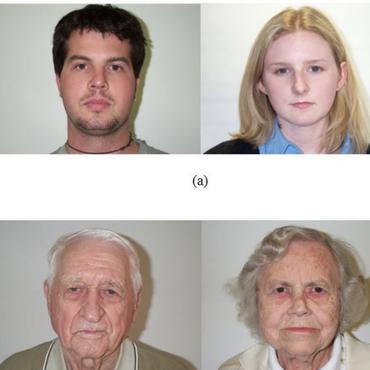Search Results for author: Albert Gordo
Found 17 papers, 6 papers with code
A Whac-A-Mole Dilemma: Shortcuts Come in Multiples Where Mitigating One Amplifies Others
1 code implementation • CVPR 2023 • Zhiheng Li, Ivan Evtimov, Albert Gordo, Caner Hazirbas, Tal Hassner, Cristian Canton Ferrer, Chenliang Xu, Mark Ibrahim
Key to advancing the reliability of vision systems is understanding whether existing methods can overcome multiple shortcuts or struggle in a Whac-A-Mole game, i. e., where mitigating one shortcut amplifies reliance on others.
 Ranked #1 on
Out-of-Distribution Generalization
on ImageNet-W
Ranked #1 on
Out-of-Distribution Generalization
on ImageNet-W
Generating High Fidelity Data from Low-density Regions using Diffusion Models
no code implementations • CVPR 2022 • Vikash Sehwag, Caner Hazirbas, Albert Gordo, Firat Ozgenel, Cristian Canton Ferrer
We observe that uniform sampling from diffusion models predominantly samples from high-density regions of the data manifold.
Large-Scale Attribute-Object Compositions
no code implementations • 24 May 2021 • Filip Radenovic, Animesh Sinha, Albert Gordo, Tamara Berg, Dhruv Mahajan
We study the problem of learning how to predict attribute-object compositions from images, and its generalization to unseen compositions missing from the training data.
Towards Measuring Fairness in AI: the Casual Conversations Dataset
no code implementations • 6 Apr 2021 • Caner Hazirbas, Joanna Bitton, Brian Dolhansky, Jacqueline Pan, Albert Gordo, Cristian Canton Ferrer
The videos were recorded in multiple U. S. states with a diverse set of adults in various age, gender and apparent skin tone groups.
Attention-Based Query Expansion Learning
no code implementations • ECCV 2020 • Albert Gordo, Filip Radenovic, Tamara Berg
Query expansion is a technique widely used in image search consisting in combining highly ranked images from an original query into an expanded query that is then reissued, generally leading to increased recall and precision.
Using Hindsight to Anchor Past Knowledge in Continual Learning
no code implementations • 19 Feb 2020 • Arslan Chaudhry, Albert Gordo, Puneet K. Dokania, Philip Torr, David Lopez-Paz
In continual learning, the learner faces a stream of data whose distribution changes over time.
Decoupling Representation and Classifier for Long-Tailed Recognition
4 code implementations • ICLR 2020 • Bingyi Kang, Saining Xie, Marcus Rohrbach, Zhicheng Yan, Albert Gordo, Jiashi Feng, Yannis Kalantidis
The long-tail distribution of the visual world poses great challenges for deep learning based classification models on how to handle the class imbalance problem.
 Ranked #3 on
Long-tail learning with class descriptors
on CUB-LT
Ranked #3 on
Long-tail learning with class descriptors
on CUB-LT
Rosetta: Large scale system for text detection and recognition in images
2 code implementations • 11 Oct 2019 • Fedor Borisyuk, Albert Gordo, Viswanath Sivakumar
In this paper we present a deployed, scalable optical character recognition (OCR) system, which we call Rosetta, designed to process images uploaded daily at Facebook scale.
 Optical Character Recognition
Optical Character Recognition
 Optical Character Recognition (OCR)
+1
Optical Character Recognition (OCR)
+1
Considerations When Learning Additive Explanations for Black-Box Models
1 code implementation • ICLR 2019 • Sarah Tan, Giles Hooker, Paul Koch, Albert Gordo, Rich Caruana
In this paper, we study global additive explanations for non-additive models, focusing on four explanation methods: partial dependence, Shapley explanations adapted to a global setting, distilled additive explanations, and gradient-based explanations.
A deep architecture for unified aesthetic prediction
no code implementations • 16 Aug 2017 • Naila Murray, Albert Gordo
Image aesthetics has become an important criterion for visual content curation on social media sites and media content repositories.
Beyond Instance-Level Image Retrieval: Leveraging Captions to Learn a Global Visual Representation for Semantic Retrieval
no code implementations • CVPR 2017 • Albert Gordo, Diane Larlus
Following this observation, we learn a visual embedding of the images where the similarity in the visual space is correlated with their semantic similarity surrogate.
End-to-end Learning of Deep Visual Representations for Image Retrieval
4 code implementations • 25 Oct 2016 • Albert Gordo, Jon Almazan, Jerome Revaud, Diane Larlus
Second, we build on the recent R-MAC descriptor, show that it can be interpreted as a deep and differentiable architecture, and present improvements to enhance it.
 Ranked #13 on
Image Retrieval
on ROxford (Medium)
Ranked #13 on
Image Retrieval
on ROxford (Medium)
Deep Image Retrieval: Learning global representations for image search
3 code implementations • 5 Apr 2016 • Albert Gordo, Jon Almazan, Jerome Revaud, Diane Larlus
We propose a novel approach for instance-level image retrieval.
 Ranked #3 on
Image Retrieval
on Oxf105k
Ranked #3 on
Image Retrieval
on Oxf105k
What is the right way to represent document images?
no code implementations • 3 Mar 2016 • Gabriela Csurka, Diane Larlus, Albert Gordo, Jon Almazan
In this article we study the problem of document image representation based on visual features.
LEWIS: Latent Embeddings for Word Images and their Semantics
no code implementations • ICCV 2015 • Albert Gordo, Jon Almazan, Naila Murray, Florent Perronnin
The goal of this work is to bring semantics into the tasks of text recognition and retrieval in natural images.
Deep Fishing: Gradient Features from Deep Nets
no code implementations • 23 Jul 2015 • Albert Gordo, Adrien Gaidon, Florent Perronnin
Convolutional Networks (ConvNets) have recently improved image recognition performance thanks to end-to-end learning of deep feed-forward models from raw pixels.
Supervised mid-level features for word image representation
no code implementations • CVPR 2015 • Albert Gordo
Machine learning techniques can then be supplied with these representations to produce models useful for word retrieval or recognition tasks.







